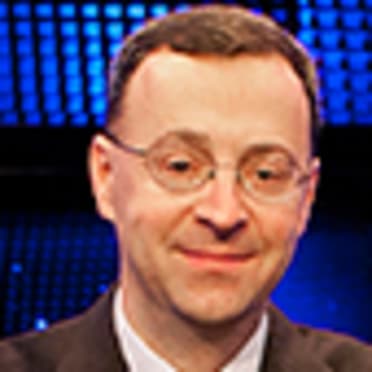This teen is heir apparent to Vlad's No. 1 spot
For most of the last year, the question hasn't been whether Vladimir Guerrero Jr. is the best prospect in baseball. Rather, it has been whether he's the best offensive prospect of all time.
Since the Blue Jays called Guerrero up on Friday, the third baseman's days atop MLB Pipeline's Top 100 Prospects list are numbered. He'll graduate as soon as he exceeds either 130 at-bats or 45 days of pre-September service time in the big leagues, which should happen by early June.
Who will succeed Guerrero at No. 1? Padres shortstop Fernando Tatis Jr. and White Sox outfielder Eloy Jimenez would be the obvious choices if they weren't going to graduate before Guerrero does – as health allows.
Oddly enough, almost every other prospect in our Top 10 either has been injured (Reds third baseman/outfielder Nick Senzel, Twins outfielder Alex Kirilloff, Blue Jays shortstop Bo Bichette) or gotten off to a slow start (Twins shortstop Royce Lewis, Astros right-hander Forrest Whitley). The lone exception is Rockies infielder Brendan Rodgers, who figures to hit his way to the Majors in the near future, as does Senzel.
The prospects vying to replace Guerrero atop the Top 100 fall into three categories. Let's take a closer look at each:
Pure offensive upside
Guerrero and Jimenez were the two biggest offensive forces in the Minors before making their way to the Majors. Now that distinction belongs to Kirilloff and Rays shortstop Wander Franco (No. 12 on the Top 100).
After missing 2017 while recovering from Tommy John surgery, Kirilloff returned to lead the Minors in doubles (44), extra-base hits (71) and total bases (296) while batting .348/.392/.578 between two Class A stops at age 20 last season. He has a pretty, left-handed swing and tremendous feel for the barrel, allowing him to drive the ball to all fields. He has yet to play in 2019, however, because of a minor wrist injury.
The most ballyhooed international signee since Guerrero, Franco exceeded Vlad Jr.'s numbers as a 17-year-old in the Rookie-level Appalachian League (.351/.418/.587 en route to MVP honors last summer) and is ahead of his pace as an 18-year-old in the low Class A Midwest League (.311/.393/.568 this spring). He's a switch-hitter who could be a plus-plus hitter with power to match, not to mention plus speed.
All-around tools
The two prospects who best combine five-tool potential with production are products of the 2017 Draft, Lewis and Angels center fielder Jo Adell (No. 13).
The No. 1 overall pick two years ago, Lewis batted .292/.352/.451 with 28 steals playing alongside Kirilloff as a 19-year-old last season. He's off to a .195/.297/.241 start in high Class A this year, but he's still the same quick-twitch athlete with premium hitting skills, game-changing speed and better power and shortstop ability than he showed as an amateur.
Adell lasted until the 10th overall choice amid questions about his ability to hit quality pitching, yet he has batted .302/.362/.539 with 25 homers and 23 steals in 148 games as a pro and reached Double-A at age 19 last July. He's a 30-30 candidate with the chance to have at least plus tools across the board. He has been sidelined after a baserunning mishap in Spring Training left him with a strained left hamstring and sprained right ankle.
Frontline starting pitchers
With Athletics left-hander Jesus Luzardo (No. 11) out after straining his rotator cuff during Spring Training, the debate for baseball's best pitching prospect comes down to Whitley, Padres left-hander MacKenzie Gore (No. 14) and Tigers right-hander Casey Mize (No. 16). While Whitley may get a slight edge for the best overall repertoire and Gore is a southpaw with a chance for four plus pitches, Mize has the best combination of stuff and polish since Stephen Strasburg.
Strasburg went No. 1 overall in 2009 and Mize did the same last June. His upper-80s splitter is one of the nastiest pitches in the Minors and he has uncanny command of it, and he also fills the strike zone with mid-90s mph two- and four-seam fastballs, upper-80s cutters and mid-80s slurves. The 21-year-old earned a promotion to Double-A last week after four dominant starts in high Class A: 26 innings, seven hitters, one run (0.35 ERA), one walk, 25 strikeouts.
Franco = Guerrero + Tatis?
It's premature to say that Franco could be better than Guerrero -- he has played just 81 pro games, none above low Class A -- but it's not too early to anoint him as Vlad Jr.'s most worthy heir apparent as the game's best prospect. He has the highest offensive ceiling in the Minors, owns plus speed and the defensive tools to play at least an average shortstop with the fallback of becoming an asset at second or third base. He could wind up approximating a combination of Guerrero's brilliance at the plate with Tatis' all-around ability.
